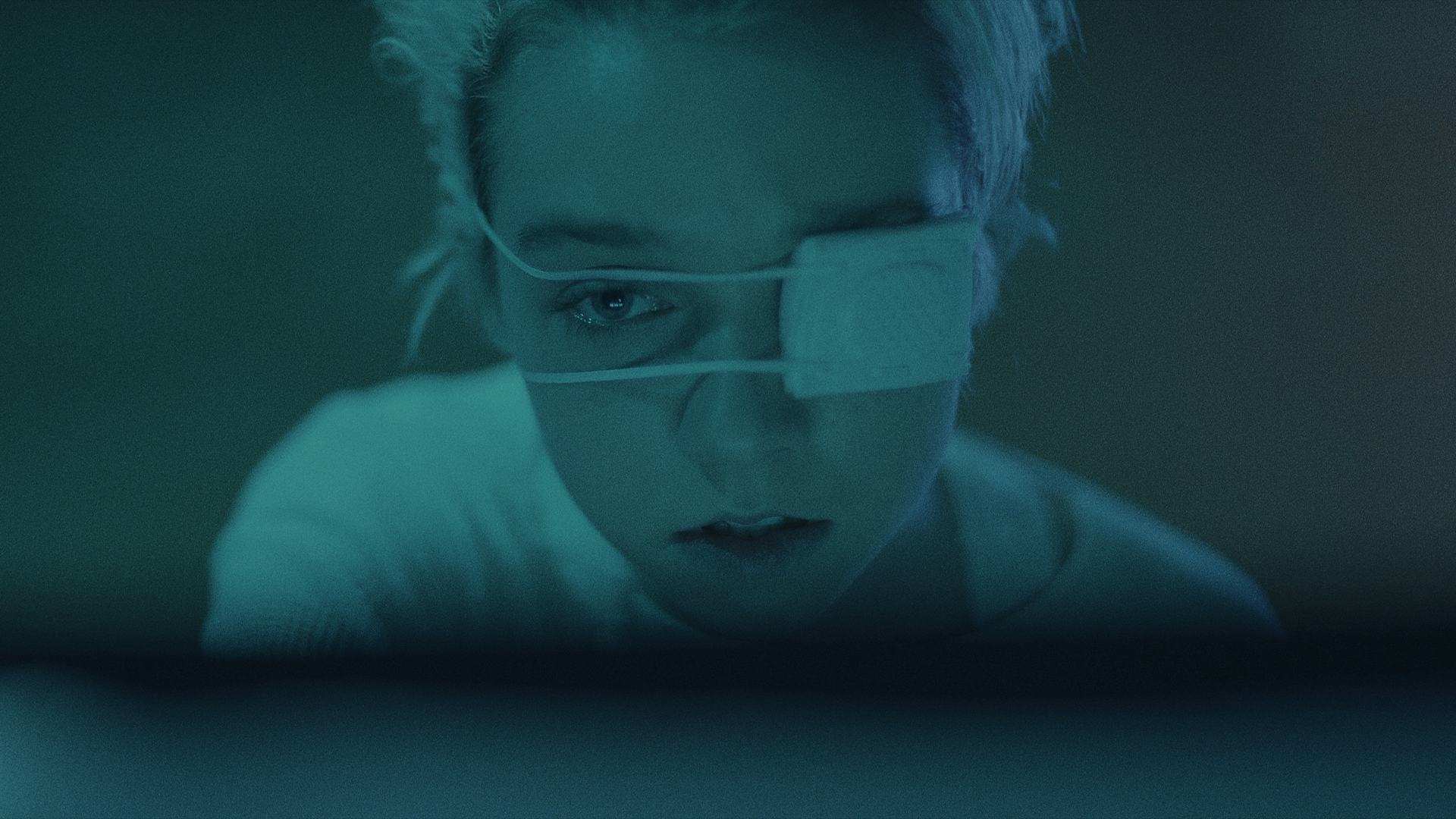
When filmmaker Anthony Scott Burns was eight years old, his nights were plagued by creeping shadows. Amidst the trauma of his mother’s death, the Ontario native would wake up from sleep, body frozen stiff. In the corner of his eye, Burns felt something, or someone — “a sort of dark, blotchy, shadowy person,” he says — staring back at him.
“I thought for a while it was my mom,” Burns recalls to Inverse via Zoom. “As time went on, I started to feel like if this thing turned around and looked at me, I was dead.”
Years passed and Burns forgot about the experience until he watched the buzzy 2015 documentary The Nightmare. It was then Burns finally knew what happened all those nights ago. While Burns was relieved to learn what he suffered was naturally occurring sleep paralysis — a state between sleep and waking consciousness where the body is stiff but the mind feels dread from hallucinations — he feared something else: Why are we all seeing the same thing?
“To me, that’s the weird question,” Burns says. “If we’re all seeing the same thing, this shadow with glowing eyes, it can’t be some mass hallucination. It’s something we share.”
Now available on Video on Demand platforms, Burns reckons with his (and everyone else’s) sleepy-time demons in his sophomore feature film, Come True.
Inspired by a 2011 study conducted by researchers at UC Berkely, where scientists impressively captured visuals of subjects’ mental thoughts, the science-fiction horror Come True follows homeless teenager Sarah (Julia Sarah Stone) who signs up for a university study to secure herself a safe, good night’s sleep. What she finds instead is what the research is actually trying to figure out: The origins of our waking nightmares.
Burns wore plenty of hats for Come True. Filmed before the pandemic but finished during widespread quarantine, Burns was Come True’s director, writer, cinematographer, screenwriter, composer, and even part of its VFX team. “For better or worse, I needed to put it out and I don’t know why,” Burns says. “It doesn’t seem like a personal story, but it is.”
Though Burns’ childhood and the Berkeley study were the “impetus” for Come True, the story “free-formed in my head,” he says. “I didn’t write this so much as my subconscious did,” he says. “I think that’s the best way to approach something that’s about dreams.”
Burns adds that Carl Jung’s theories on the collective unconscious gave him solid ground for his wild narrative. “If you believe in a collective consciousness Carl Jung talks about in his dream theories, it kind of makes sense,” he says. The TL;DR: Memories and experiences are passed down through generations of genetics.
“The basic idea is that all of our trauma and things we struggle with are the ancestral memories inside of us,” Burns explains. “We share things because they’re things our ancestors learned.”
So, a moving shadow with glowing eyes is scary because it’s probably the first thing to ever scare our progenitors. “Thousands of years ago some caveman saw a cat at night, or a beast. And so we have a fear of a dark figure with glowing eyes,” Burns says. “That’s an animal at night. It has to be some memory that passed on as we evolved.”
The collective unconscious proved to be more valid to Burns when, after completing work on Come True, he settled down with the 2019 action-horror video game Control. He was struck by the game’s eerie similarities to his film, right down to the same brutalist-style office chairs both Control and Come True use. “After the movie I played Control and went, ‘Oh my god,’” he says. “That’s what I’m saying about collective unconscious. There’s a way we work as people. “
Being a sci-fi movie, Come True brings a multiverse spin to Jung’s theories. No spoilers here, but Burns’ film suggests the shadows we see when we sleep may not be of this world. “The creepier, cooler answer is that there’s some other place and things are watching us. This isn’t a movie geared towards making monsters, it’s geared towards understanding what monsters might be.”
But everything is just a theory. Come True is just a movie. In truth, no one knows where or why those who suffer sleep paralysis, which is anyone at any time, sees the same shadowy figure.
“There’s really something scary to a humanoid whose face we can’t see,” Burns says. “We like to see faces. Faces tell us how someone is responding to us and how they’re gonna act. If there’s no face here, there is something primal about the fear that generates.”
What is that fear, exactly? “We don’t know,” Burns says. “We don’t know anything about this universe. We think we do, but we don’t.”
Come True is available now on Video on Demand.







